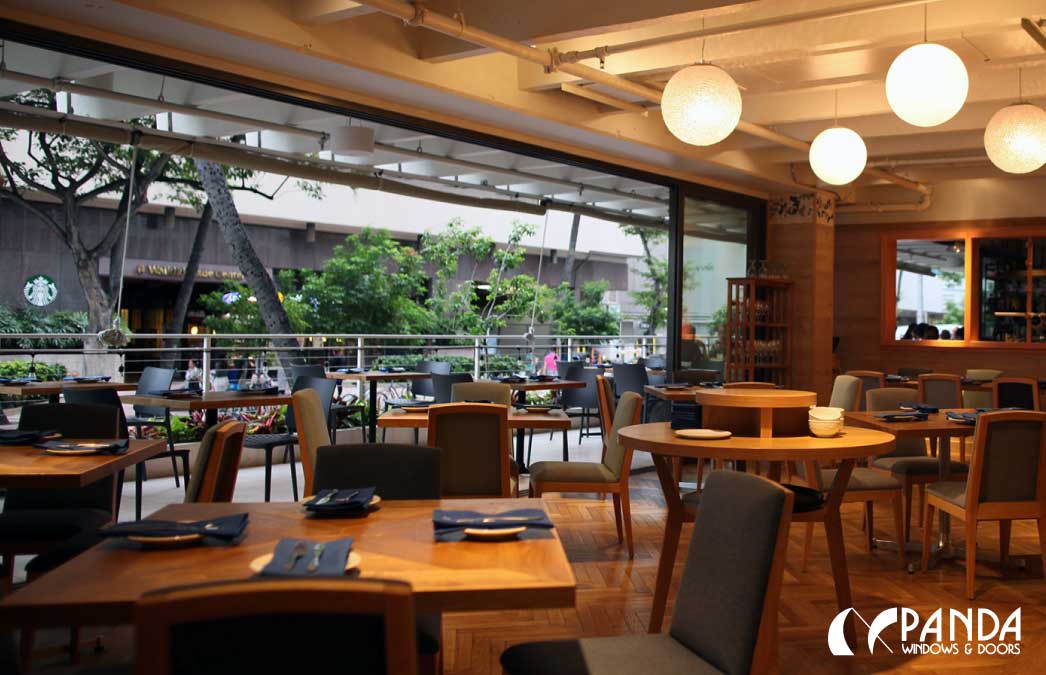Cardinal Glass Industries vs Bendheim Architectural Glass | Prices & Reviews for Window Glass
September 26, 2024
Key Takeaways
- Low-E glass has a microscopically thin coating of metal oxides that reflects heat, making it more energy-efficient than regular glass.
- Regular or annealed glass is the basic product used in most windows but lacks the advanced thermal properties of Low-E glass.
- Low-E glass can reduce energy losses by up to 50%, translating to lower heating and cooling bills.
- While Low-E glass has a higher upfront cost, the energy savings can offset the initial investment over time.
- At Panda Windows & Doors, we can help you choose between low-E and regular glass depending on factors such as climate, home design, and energy-saving goals.
What is Low-E Glass
Low-E, or low-emissivity glass, is a type of energy-efficient glass designed to minimize the amount of infrared and ultraviolet light that passes through without compromising the amount of natural light that enters.
This is possible due to a thin coating of metal oxide that reflects heat. This coating is applied to one side of the glass in the factory, and it works by reflecting the interior temperatures back inside, keeping your space warm during winter and cool during summer.

In winter, the coating reflects interior heat back into the room while in summer, it reflects the sun’s heat away, keeping the interior cool (image courtesy of Energy Education).
Advantages of Low-E Glass
- By reflecting heat back into the room, Low-E glass reduces the need for additional heating in the winter and air conditioning in the summer.
- With improved energy efficiency comes lower energy bills. Over time, the savings can be significant.
- Low-E glass blocks harmful UV rays, which helps prevent your furniture, carpets, and curtains from fading.
- It helps maintain a consistent temperature in your home, which means more comfort year-round.
Disadvantages of Low-E Glass
- It’s more expensive than regular glass. However, the long-term energy savings can outweigh the initial cost.
- Installation requires professional expertise, which can add to the overall cost.
|
Founded in 1991, Panda Windows & Doors specializes in state-of-the-art custom glass wall systems for both residential and commercial spaces through Panda Windows & Doors. Operating from our manufacturing facility in Las Vegas, Nevada, we have been at the forefront of innovation for over 30 years. Our extensive product lineup includes over 80 high-end offerings, such as pivot doors, French doors, folding doors, lift & slides, multi-slides, horizontal sliding walls, and operable windows. These systems are available in materials like aluminum, steel, stainless steel, bronze, solid wood, and aluminum-wood clad. We are renowned for our award-winning designs, engineering solutions, and fast lead times, delivering in just 6-10 weeks to customers throughout the U.S. and Caribbean. Trusted by leading architectural firms and glaziers nationwide, we stand as the premier manufacturer of custom luxury windows and doors in the United States. |
What is Regular or Annealed Glass
Regular or annealed glass is the starting point for all glass types. It’s made by slowly cooling molten glass to relieve internal stresses. Without this process, the glass would be prone to breaking.

Regular or annealed glass is simple and transparent – but it has basic insulation and protection features. The image above shows the differences between annealed, tempered, and laminated glass (image courtesy of Alumax).
Advantages of Regular Glass
- It’s the most economical option for window glass.
- It provides a clear view without distortions since it has no coatings.
- It can be easily recycled, which is great for the environment.
So if your budget is tight and you live in a mild climate, regular glass might be just what you need.
Disadvantages of Regular Glass
- It lacks the thermal efficiency of Low-E glass, which means higher energy bills.
- It offers no protection against UV rays, so your interior furnishings might fade over time.
- It lacks the strength offered by tempered, laminated, or impact-resistant glass.
It’s a trade-off, and it’s essential to weigh these factors when making your decision.
Low-E Glass vs Regular or Annealed Glass
Energy Efficiency
If reducing your carbon footprint and lowering energy costs are important to you, Low-E glass is the way to go. Its superior insulation properties will help you save on energy bills and make your home more eco-friendly. On the other hand, regular glass is suitable for indoor applications where temperature and light control aren’t as critical.
Cost Considerations
For projects where initial costs are a major consideration, regular glass is the most economical choice. It’s widely available and doesn’t require the same level of investment as Low-E glass. But the ROI of low-E glass is unmatched since you get to save up more on electricity bills for the long term.
Home Positioning and Sunlight Exposure
The orientation of your home and the amount of direct sunlight it receives can also dictate the best type of glass for your windows.
Homes with windows that face the sun for the majority of the day will benefit from Low-E glass to prevent excessive heat gain. If your home is shaded or positioned in a way that doesn’t receive much direct sunlight, regular glass might suffice.
Installation and Maintenance
Low-E glass requires a bit more finesse for installation and maintenance. The coated side of the glass needs to be properly identified and installed facing the correct direction; otherwise, it won’t perform as intended.
Regular glass is more forgiving during installation since there’s no coating to consider. Maintenance-wise, both types of glass require the usual cleaning, but with Low-E glass, you’ll need to ensure that harsh chemicals don’t damage the coating.
Aesthetic and Practical Considerations
Low-E glass can have a slight tint, depending on the type of coating applied. While this is often negligible and can actually enhance the look of your home, it’s something to be aware of if you’re aiming for a specific aesthetic. Regular glass, on the other hand, offers unaltered natural light and true color transmission.
Practically speaking, Low-E glass can reduce glare, which can be a significant advantage in rooms with lots of natural light.

The coating can also help reduce the sun’s bleaching effect on furniture and fabrics, helping your interiors stay vibrant for longer.
Ideal Uses for Each Glass Type
Understanding where and how to use each type of glass will ensure that you get the most out of your investment.
Low-E glass is best utilized in spaces where energy conservation is a priority, while regular glass is perfect for less demanding applications.
Best Situations for Low-E Glass
Low-E glass shines (pun intended) in scenarios where thermal efficiency is a top priority. Think of areas in your home that get a lot of sunlight such as patios or sunrooms – these are the places where Low-E glass can help regulate temperature extremes, keeping your living space more comfortable.
Besides that, if you’re in a region with harsh winters or scorching summers, Low-E glass can help mitigate the weather’s impact on your home’s interior.
Therefore, homes with high energy bills due to heating or cooling should definitely consider upgrading to Low-E glass. It’s an investment that pays off in the long run.
Best Situations for Regular Glass
Regular glass is well-suited for areas where temperature control is not a concern, such as interior doors, decorative features, or in homes located in temperate climates. It’s also the go-to choice when budget constraints are tight, as it’s more affordable than Low-E glass.
In areas where the glass is not exposed to high traffic or potential impact, regular glass is often sufficient.
However, it’s important to note that for safety-critical areas like doors and low windows, tempered or laminated glass is recommended.
Regular glass is a clear winner for decorative purposes too – whether it’s for picture frames, glass tabletops, or cabinet doors, regular glass offers simplicity and elegance. It allows for true color perception and can be easily cut and shaped into various designs.
|
Comparison |
Low-E Glass |
Regular/Annealed Glass |
|
Energy Efficiency |
Highly energy efficient, can reduce energy losses by 30-50% |
Poor thermal insulation, higher heating/cooling costs |
|
Cost Considerations |
More expensive upfront, but energy savings offset this over time |
Less expensive initially, but higher long-term energy costs |
|
Installation and Maintenance |
Similar installation to regular glass, durable coating requires no special maintenance |
Straightforward installation, prone to scratches and damage |
|
Aesthetic and Practical Considerations |
Slightly tinted appearance, excellent UV protection and glare reduction, range of options |
Clear, undistorted visibility, no UV/glare control, shatters into dangerous shards |
|
Ideal Uses |
– Areas with high temperature fluctuations – Homes that get a lot of sunlight – Regions with a mix of hot and cold climates – When energy efficiency is a priority |
– Applications where strength and safety are not major concerns – When cost is the primary factor – Situations requiring easy fabrication |
Table comparing the characteristics of low-E glass and regular glass.
Making the Right Choice with Panda Windows & Doors
At Panda Windows & Doors, we understand that every construction project is unique. That’s why we offer a range of glass options, including both low-E and regular glass, to suit various commercial and residential projects’ needs and preferences.
Our expertise lies in crafting custom glass solutions that enhance the beauty and functionality of your home.
|
The Panda Process 1. Design: We guide you in selecting the ideal custom luxury glass doors and windows from our extensive selection of over 80 options. Customize every detail, including choosing between Low-E glass or regular glass, to suit your needs. Review and approve your sales order to ensure all specifications are accurate before we proceed with manufacturing. 2. Manufacturing: Our project manager confirms all necessary components and procures any unique materials required. CNC machines precisely cut and mill extrusions, which are then meticulously cleaned and powder-coated for a durable finish. 3. Quality Control: Each product undergoes a thorough inspection and testing on our test wall to guarantee smooth functionality and high quality. We provide you with photos and videos of your products before packaging to confirm they meet your expectations. 4. Packaging & Shipping: Products are securely wrapped in protective materials and placed in custom-built crates to ensure safe transit. Whether shipping domestically or internationally, we guarantee your order arrives intact. 5. Delivery & Warranty: Upon delivery, inspect your order and register the product to activate the limited warranty. Apply a high-quality finish to any wood surfaces within 7 days to prevent damage. Ensure proper installation and protection during construction. 6. Care & Maintenance: Follow our care and maintenance guide to keep your products in top condition. Regular cleaning and maintenance will ensure they remain functional and beautiful for a lifetime. |
Contact us to learn more about our low-E and regular glass for your custom doors and windows.
Frequently Asked Questions (FAQ)
What Exactly is Low-E Glass?
Low-E glass is a type of glass that has a microscopically thin, transparent coating that reflects long-wave infrared energy (or heat). Its primary purpose is to keep the heat inside when it’s cold and outside when it’s hot, making your home more comfortable and reducing energy costs.
How Does Low-E Glass Save Energy?
Low-E glass saves energy by reflecting interior temperatures back inside your home. This means less strain on your heating and cooling systems and, as a result, lower utility bills.
Why Choose Regular Glass Over Low-E?
Regular glass may be the right choice if you’re looking for a cost-effective solution and live in a mild climate where the temperature extremes are not a concern. It’s also preferable if you need glass for interior projects where energy efficiency is not a priority, such as for a picture frame or a tabletop.
Can Low-E Glass be Used Everywhere?
While Low-E glass is versatile, it’s not always the right choice for every situation. It’s best used in areas where energy efficiency is desired, such as exterior windows and doors. Certain aesthetic or cost considerations might make regular glass a better fit for some projects.
- Low-E glass is ideal for external applications where thermal control is needed.
- Regular glass is suitable for internal or decorative use where energy savings are not a priority.
How to Tell the Difference Between Low-E and Regular Glass?
One way to identify Low-E glass is by the slight tint it might have, or by the way it reflects objects. Another method is to hold a match or penlight close to the glass; Low-E glass will reflect the flame or light in a specific pattern due to its coating.

NanaWall vs Andersen vs Panda Doors and Windows | Costs & Features
Compare NanaWall, Andersen, and Panda doors and windows, examining their costs and features to help you choose the best fit for your home in this detailed guide.

NanaWall vs Pella vs Panda | Door & Window Costs & Features
Compare NanaWall, Pella, and Panda doors and windows, exploring costs and features to help you choose the best option for your home in this guide.

Gas-Filled Glass vs Tempered Glass: Which Is Better?
Discover the differences between gas-filled glass and tempered glass to decide which is better for your building needs in our guide.











